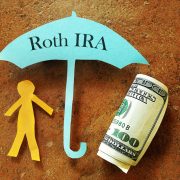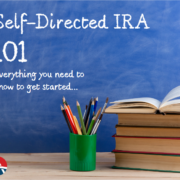Passive Investing within a Self-Directed IRA
What is financial freedom? Some define it in different ways, but the clearest line between investing and achieving financial freedom is simple: having more money coming in through passive investments than you have money going out. A Self-Directed IRA is typically a highly active way to invest in your retirement accounts—but it doesn’t mean you have to avoid a passive investing strategy where you sit back and collect money after investing it properly. Let’s explore some of the ways you can achieve passive investing within a Self-Directed IRA by using a portfolio you design yourself.
Passive Investments: Options and Benefits
What does it mean to have passive investments? It means that you have investments you don’t have to touch. Typically, many people associate this term with passive income, which is money that comes in automatically simply because you own the investment. For example, if you collect dividends from a stock, that becomes passive income. Many people count real estate rentals as passive income, too, especially if you work through a property manager who handles the property for you. Many REITs, or real estate investment trusts, offer high yields with dividends.
All of these investments are asset classes you can hold within a Self-Directed IRA, where you can enjoy retirement protections that come with these accounts. For example, if you hold a piece of real estate within an IRA and collect monthly rental income through a property manager, you can think of it as a largely passive investment.
Isn’t Self-Directed IRA Investing Highly Active?
It’s true that Self-Directed IRA investing typically means that you’re taking the bull by the horns. You’re the one in charge of what goes into your retirement account, and with a Self-Directed IRA, you’re not necessarily using a financial adviser. At least your Self-Directed IRA administration won’t be a financial adviser, but you’re always free to seek one out on your own.
So doesn’t this mean that Self-Directed IRA investing is highly active? Not necessarily. You can actively choose to build an investment portfolio that suits a more passive style. For example, there’s nothing stopping you from opening a Self-Directed IRA brokerage account and investing solely in REITs. These collect income from their renters and pay out part of their profits in dividends. You don’t have any properties to manage—you simply own part of the trust that manages the properties.
You can, of course, choose to take a far more active role with your Self-Directed IRA, and that’s what many investors do. Investors with a lot of real estate experience, for example, will open up a Self-Directed IRA and start looking all over for a great real estate investment. However, please note that with a Self-Directed IRA, the rent you collect will have to be managed by a third party property manager, as you can’t work on the property personally.
Why Self-Directed IRAs?
Self-Directed IRAs provide an additional level of flexibility when it comes to investing for retirement because the investor is able to make decisions about what types of assets they want in their portfolio without having someone else managing the investments on their behalf. Self-Directed IRAs allow investors access to alternative asset classes such as real estate or private placements which may not be available through a traditional approach to building a retirement portfolio.
Want to know more about how investing within a Self-Directed IRA works? Now’s the time to find out. You can reach out to us here at American IRA by dialing our phone number at 866-7500-IRA. We’ll be happy to answer the questions you have about Self-Directed IRA investing.
For more on Passive Investing within a Self-Directed IRA, visit: Passive Real Estate Investing Through Private Placement Funds | American IRA









